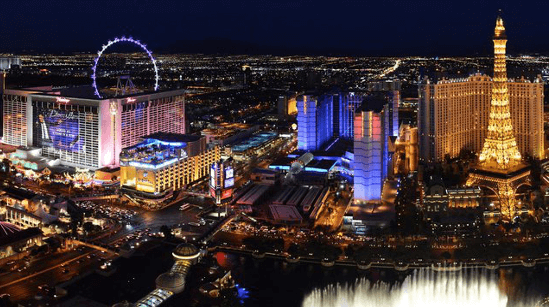Las Vegas is the metropolitan epicentre in the middle of the South Nevadan desert. Since inception, it has attracted millions of tourists seeking out entertainment, and has produced trillions of dollars in accumulative revenue. While it was ranchers and railroad workers that established the city, casinos soon took over as the major source of income, offering visitors low-cost entertainment and luxury in a style imitative of the liberties previously found in the Old Wild West. This lay the bed for an opportunistic organised crime to involve itself in all sorts of illicit or tangentially so businesses such as gambling and prostitution, and many casinos were built from the ground up on money accrued from drugs, racketeering in the 1940s.
Early in the 20th Century, Las Vegas was plotted on a railroad map that connected San Pedro, Los Angeles, and Salt Lake. By 1910, a ban was placed on gambling, but practices continued under the cover in speakeasies and illicit casinos. In 1931, the ban was lifted, but by then, organised crime had already got its claws deep in and was there to stay. At the same time, construction works on the massive dam that later came to be recognised by the name Hoover dam started within proximity of the city. Casinos and showgirl venues attracted the project’s workers.
10 years later, El Rancho Vegas — the first of a kind of hotel-casinos - opened its doors right outside Las Vegas. Other similar projects were seen to completion on the highway that is now known as “The Strip”. One of the most renowned and swank resorts was the Flamingo, established by mobster Bugsy Siegel and Jewish gangster Meyer Lansky in 1946. It put on shows featuring top-notch talent, which was attended by many celebrities.
One year later, Siegel was murdered, but his vision was continued through the 50s and 60s with the opening of big names such as Sahara, the Sands, New Frontier, and Riviera. This time, money poured in by organised crime was combined with that of more respectable investors such as Wall Street Banks, union pension funds, the Mormon Church and the Princeton University Endowment. By then, shows featuring stars such as Frank Sinatra, Dean Martin, and Elvis Presley became the order of the night.
In the 1940s, Cold War facilities dotted Nevada, most famously of which was the Nevadan Test Site that oversaw the detonation of an average of 100 nuclear bombs. This could be viewed from hotels, and as bizarre as it may sound, it became part of the sightseeing entertainment that was also pictured in postcards.
In the mid-60s, Howard Hughes bought out several hotel-casino facilities, spearheading an era that witnessed a shifting of ownership from the hands of organised crime to that of corporate conglomerates.
Prior to the 90s, a new project to replace old casinos with mega complexes with specific lavish stylistic themes such as ones influenced by great ancient civilisations or world capital cities was set in place. The Mirage was the first on the list.
The number of resorts and annual visitors has stayed its copious path ever since, even during the 2008 recession that brought about a spike in unemployment and a hard-hitting low in the housing price market.
Las Vegas remains a world-renowned icon, even if it has gained this reputation after paving its historically notorious way with ethically questionable ways more often than not. That being said, its image features in great works of fiction such as in the semi-autobiographical work Fear and Loathing in Las Vegas by Hunter S. Thompson, later on remade into an acclaimed movie adaptation.

